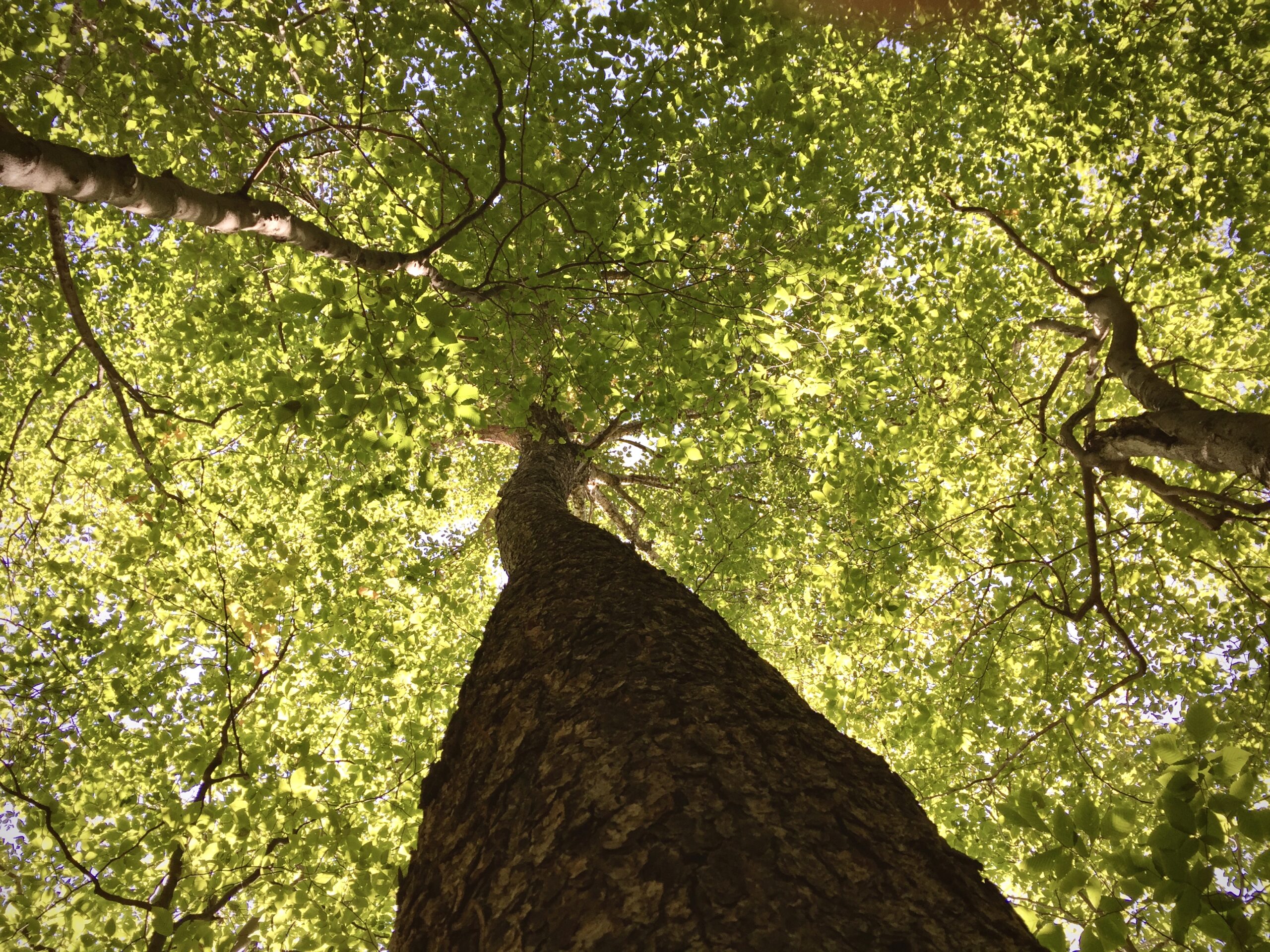The history of the White Mountain National Forest is intimately linked with the logging industry that dominated the region from the mid nineteenth and early twentieth centuries. It’s easy to spot the legacy of the logging companies in railroad grades and road cuts that cross the forest, and in the artifacts left behind in the woods. Knowing that most of the forest I see is second or third growth, I always wonder what the mature, old growth forest would look like. This weekend’s mission was to find out.
Deep in the Sandwich Range Wilderness, The Bowl Research Natural Area is one of the few sections of the forest with no history of logging, farming, or fire1, so this was our destination.
Jess and I set out Friday afternoon and reached the top of the ridge between the Sleepers and Mt. Whiteface just before sunset. Being a bad blogger, I didn’t take any pictures of the moose trail or the sunlit marsh at the ridge top. We weren’t the only people out camping on that crisp Friday night— the nearby campsites were already occupied so we continued up Kate Sleeper trail toward Mt Whiteface and found an relatively flat, open wood to camp for the night.
Being a bad blogger and also pretty cold by the time we’d set up our tents and eaten dinner, I didn’t take a picture of our campsite until we were packed up on Saturday morning.

Saturday brought us the rest of the way up Kate Sleeper trail to the (underwhelming, wooded) summit of Mt. Whiteface
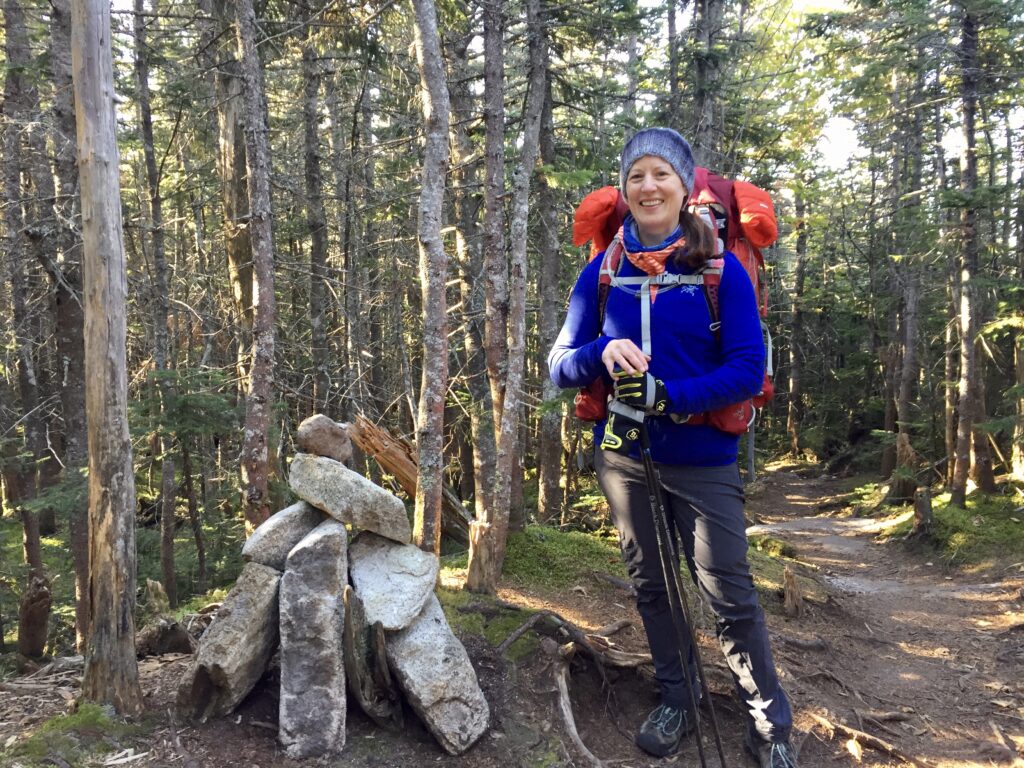
And then along the rim of The Bowl. As we followed Dicey’s Mill trail down into The Bowl, the spindly firs gave way to mixed hardwoods- beech, maple, and some birch. The biggest trees we saw were definitely bigger than what I’ve seen in other parts of the forest, and still interspersed with smaller, younger growth too.
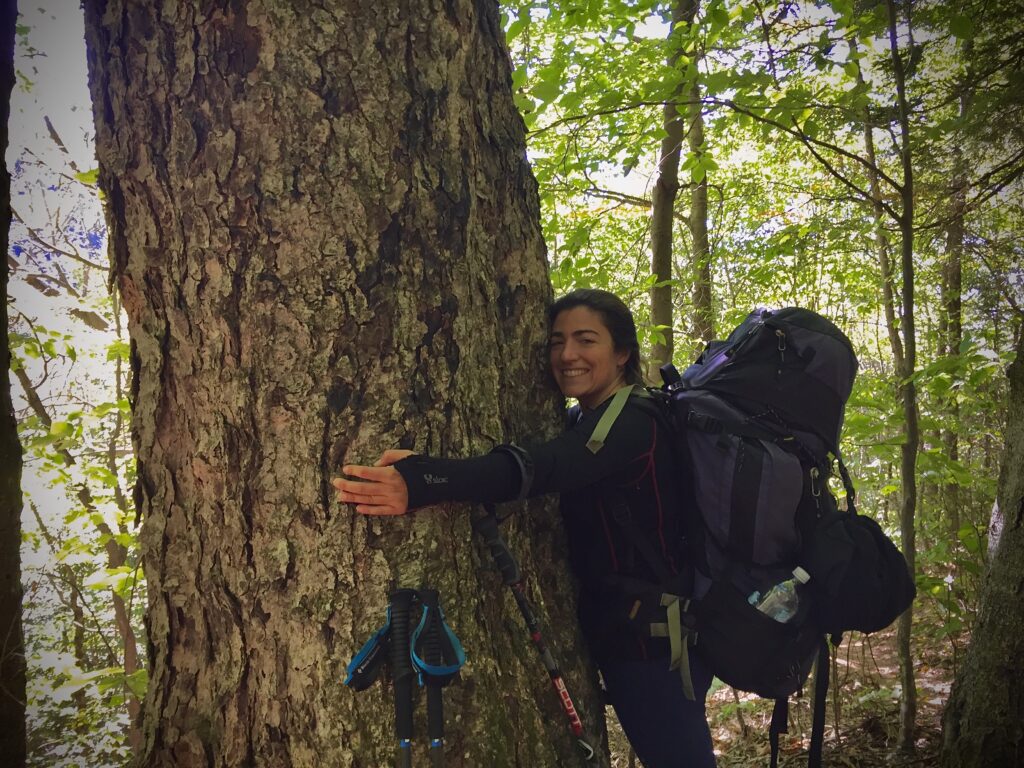
We stopped for lunch in a clearing where the trail crosses a brook at the bottom of the bowl. It was a simply stunning day in early Fall and I can’t imagine a better place to linger over bagels and trail mix.
We hiked back up out of the bowl the same way we came down, since neither the guide book nor the trail sign made the alternative sound very appealing especially with an overnight pack.
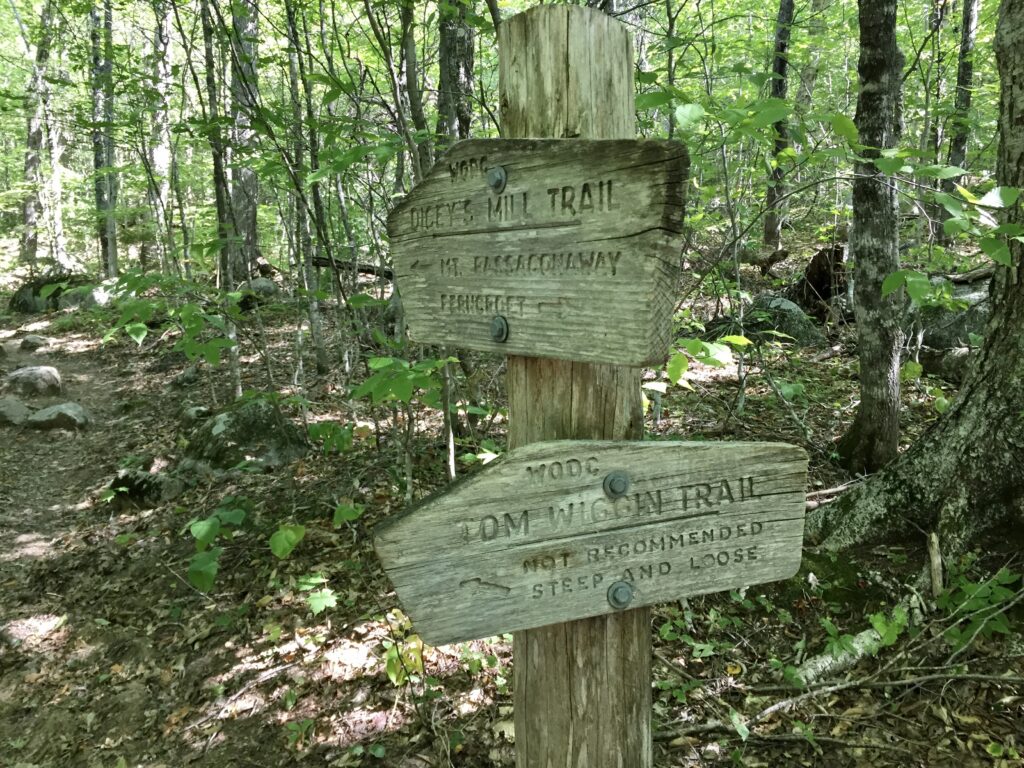
The summit of Mt. Passaconaway was also wooded, but the lookout trail that stems off just below the summit was nothing short of spectacular.
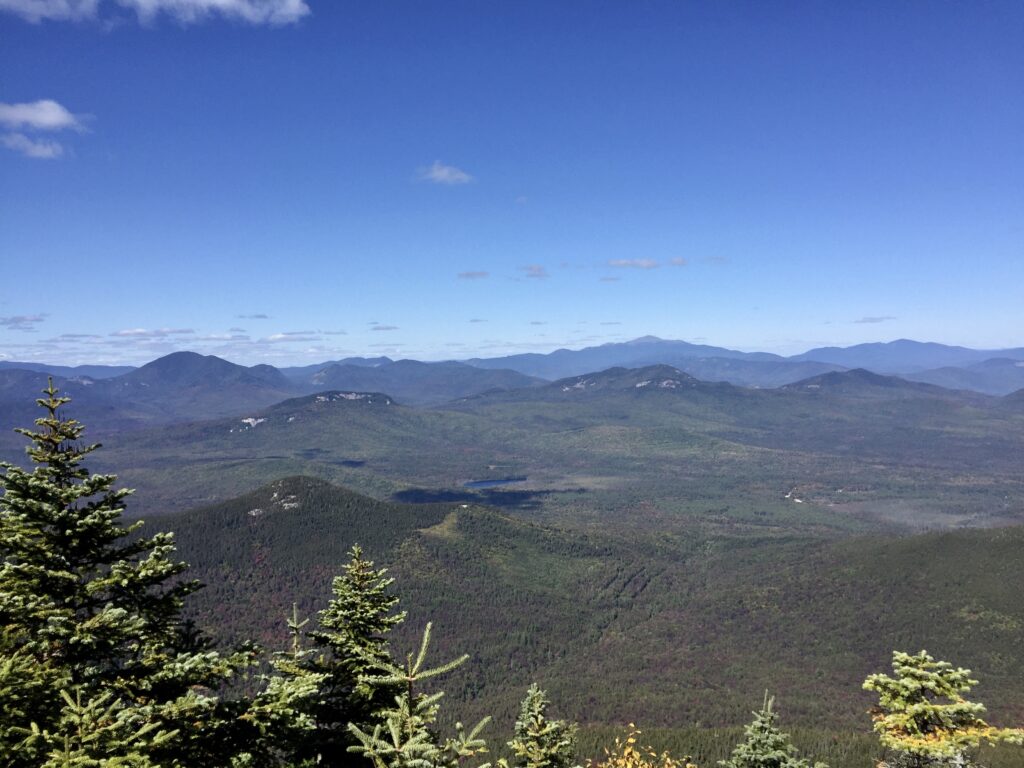
Down from the summit, Walden trail took us down 2100 feet over the next three miles, including some some sections of steep scrambling down ledges which I didn’t photograph, and through shaded fir groves which I also didn’t photograph. Since this trip was really about big, old, hardwoods I did photograph this maple tree that doubles as a signpost in a sunlit clearing.
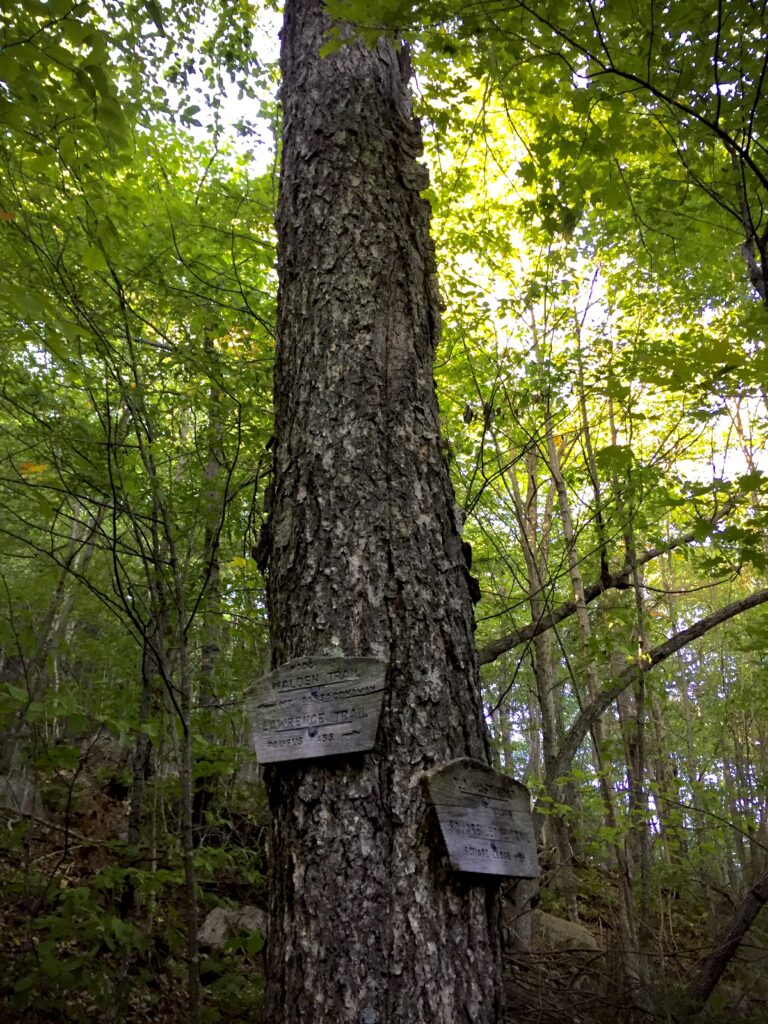
By now we were looking for the two things we needed to set up camp for the night: water and a dry, level clearing. We headed down Oliverian Brook trail which would eventually get us back to the car, and stopped to filter water from the brook at the first point it was running. A bit further down the trail, an open birch wood gave a good enough campsite next to a tree whose life story I’d like to know.
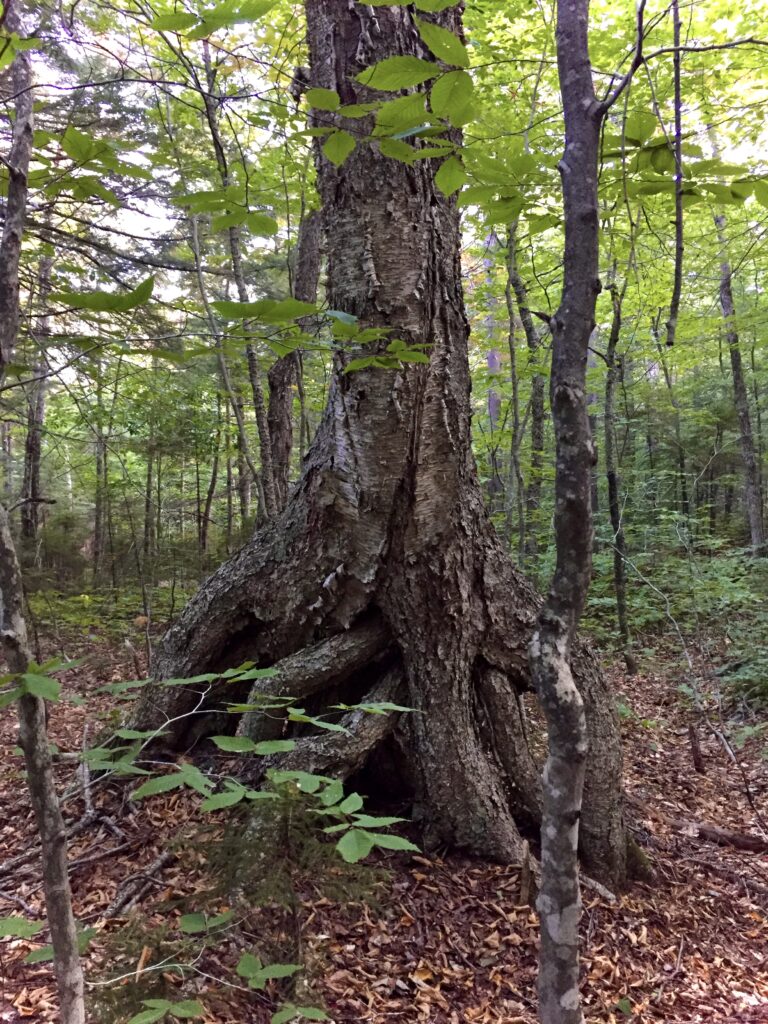
I really like hiking in the early morning, and sometimes the best incentive to get moving when the light is still golden and slanted is to camp out. It’s not exactly enjoyable to wake with the sun and crawl out of a nice warm tent into the chilly morning, but it has definite advantages over setting a weekend alarm at home to get an early start. Somehow my friends are much more keen to join in for a weekend backpacking trip than to get an early start on a day hike.

The hike down gentle slopes along Oliverian Brook back to the trailhead took us through some open marshy areas where the ferns grow to primordial heights
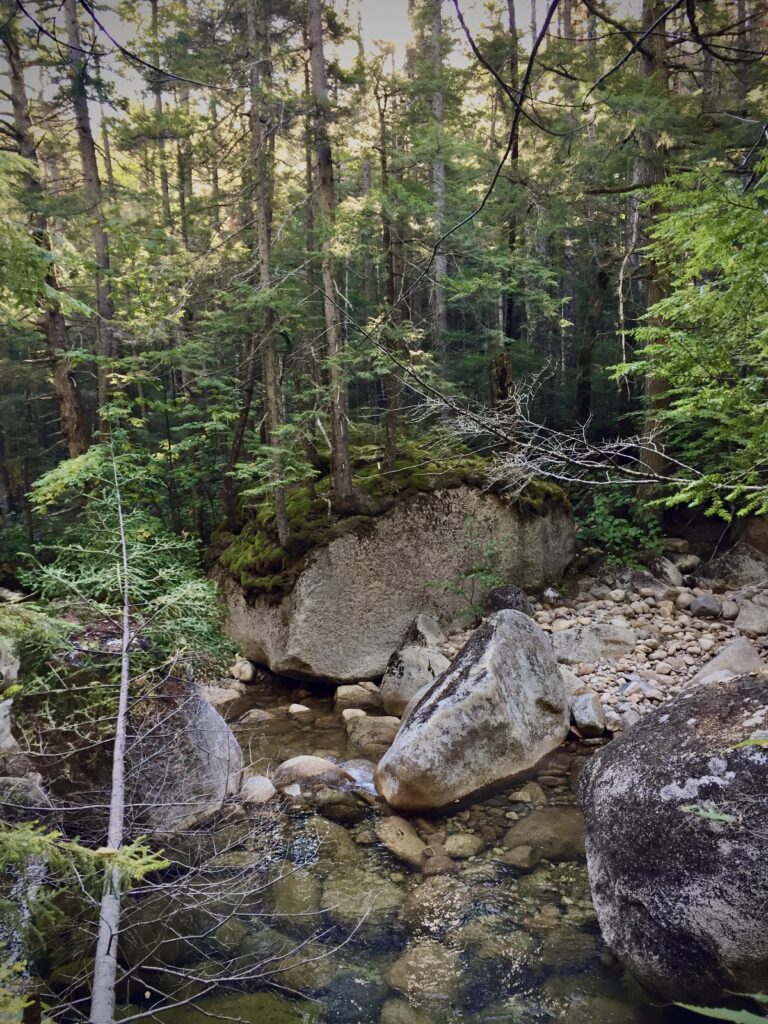
And the brook itself gains volume and drama as it flows toward its confluence with the Swift River. I’m glad we stopped to camp where we did on Saturday night, because it meant we could set up our tents and eat in daylight before it got too cold, but I did take note of some spectacular brook side camping spots further down the trail.
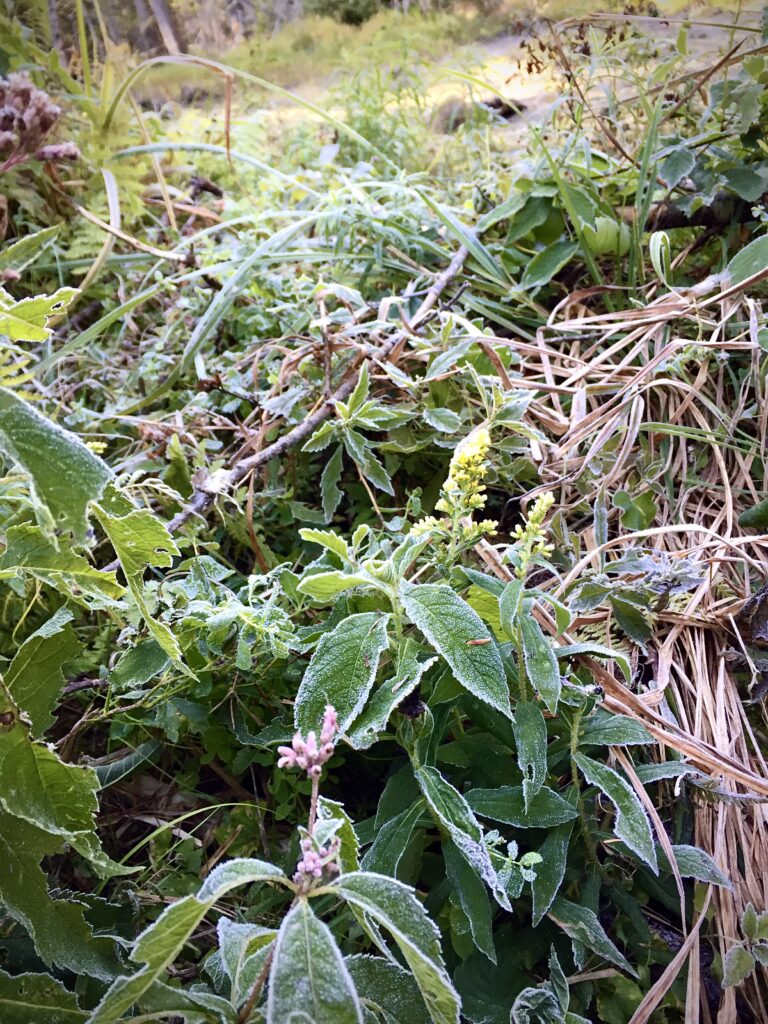
Did I mention it was cold overnight? We were well prepared for camping in the mountains and were warm enough overnight, but I’m not sure I’m really ready for summer to be over.
1 https://www.nrs.fs.fed.us/rna/nh/white-mountain/the-bowl/

